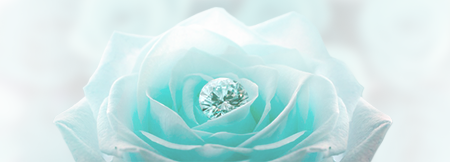
Color is the first subject we are going to talk about.
The diamond scale is not difficult at all. First of all, it's's easy to understand because the scale goes in alphabetical order. We begin our scale from the letter "D" as the highest color. Why do we start with "D" -? Because A, B, and C were already used for other definitions in the diamond industry.
Now, we can divide the whole scale into three groups:
D, E, F - Colorless
G, H, I, J - Near Colorless
K,L,M,...Z - Light Yellow
It is not difficult, is it right?
Most diamonds have yellow tints of color, caused by nitrogen traces inside the crystal lattice. The more nitrogen is in the diamond – the yellower it is, and the price is lower. The less color is in the diamond – the rarer it is, and the price is higher.
According to it, we grade diamonds from the D to Z color scale, from absolutely colorless D color to the strongest tint of Z color grade.
Your next question is: how to understand a simple way what all those grades from D to Z mean?
First of all, let me tell you a small but significant secret. The gemologist and the customer see the same stone in absolutely different ways, in the literal sense of the word. They see the diamond from different directions or positions. The gemologist inspects the loose diamond color, looking from the side position when the stone is turned upside down. Instead, the customer sees the diamond already set in a ring or other jewelry from the face-up position.

Why is it so? Because it is much easier to detect the color of loose diamond placed upside down than in a face-up position, and it is much easier to grade it from this point of view.
Why is it so important? It can be explained by the fact that the color of the set and the loose diamond looks different. Do not be surprised that a regular person and a professional diamond grader see the same stone's color completely differently. Not as you have been probably told.
Now, let's compare how the gemologist and the customer will see the color in the same diamond:







D, E, F, and G colors are perfect for the White gold.
H and I can be used with all metals White, Yellow, Pink, and Red. H color, set in Yellow metal with open prongs or Bezel setting, will look almost like E color, due to the contrast of the yellow metal ring.
J, K, L, and M are perfect for Yellow, Pink, or Red gold with open prongs or bezel setting. The contrast of colors makes them look much whiter up to 3 grades up.











